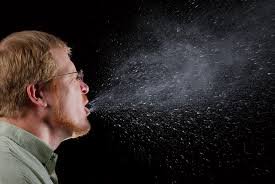When it comes to Covid-19 and the safety measures that accompany it, the obvious and the most natural investment seems to be a mask or a hand sanitizer. You walk out and see everyone wearing masks but you see very few people wearing face shields. But recently, google trends show that there has been a huge spike in the searches for the term “face shields” over the last two months. There is a growing curiosity about them and how effective they are protecting against Covid-19.

The novel coronavirus spreads mainly through the respiratory droplets when an infected individual coughs, sneezes or speaks. The Centers for Disease Control and Prevention as of now is not recommending face shields for everyday activities or as a substitute for cloth face coverings. But some experts believe that face shields could potentially be more effective than cloth face masks in the community setting. A 2014 study from the National Institute for Occupational Safety and Health (NIOSH) looked at how well face shields protected a simulated health care worker against influenza. The results found that the face shield reduced immediate viral exposure to the flu by 92% when worn within 6 feet of a cough.

Although there are no studies that analyse how well face shields protect other individuals from the wearer’s own respiratory droplets, they do have some advantages over the normal cloth face masks.
The one obvious advantage is simply the surface area. Compared to the face mask, a face shield covers a lot more of the face from the eyes, nose, mouth to the chin.
A less technical difference between a mask and a face shield is the ease of communication. While a mask completely hides your mouth, the transparency of the face shield allows for non verbal communication.You can see more of people’s mouth and their other facial expressions which makes communication easier.
In addition to that, face shields are also easier to clean and safely reuse. Face masks must definitely be discarded after using once or twice maximum. However with face shields, you can reuse them indefinitely and wash it with soap and water. Another advantage of the shield is that it makes us less likely to touch our faces. The equipment quite literally acts as a shield and doesn’t allow for us to naturally touch our face which may not necessarily be the case with a mask.
Having said that, we cannot unsee the disadvantages that come with face shields. Unlike masks, which closely seal the person’s face, face shields are relatively more open from the sides and the bottom of the face which may allow the particles to slip out. Since there isn’t concrete research on the effectiveness of face shields alone, the best bet is to wear a mask in addition to the face shield for more protection. Although face shields seem to have more advantages, it is always better to be safe than sorry.

















